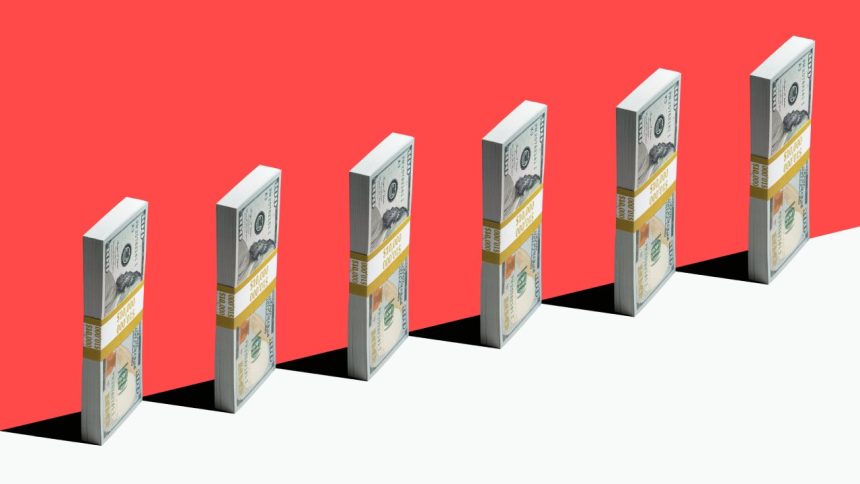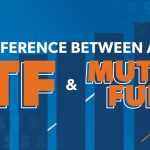I’ve been in financial services for nearly 14 years and have helped customers with the most common deposit products, but this month was the first time I opened a certificate of deposit (CD) for myself.
A CD is an account that typically has a fixed annual percentage yield (APY) for a specific term. What’s more, there’s typically an early withdrawal penalty if you withdraw your money before the term is up.
CDs can be even more appealing now if you believe rates are likely going to decrease in the coming months, as the Federal Reserve has been signaling before its September 18 meeting. But CD yields tend to change ahead of an official Fed announcement.
Here’s what the process of opening a CD was like for me and why I finally decided the time was right to lock in the yield on some cash.
Why I chose to open a CD now
In August 2023, I wrote the article “Why now might be a good time to consider longer-term CDs.” So why did it take me 13 months to open one for myself?
It all goes back to something that I say often when talking about these financial decisions: everyone’s financial circumstances are different.
I likely would have locked in a higher APY if I opened a CD last year, but I wasn’t ready yet. It’s important to be comfortable about what amount of money you’re depositing in a CD and the term of the CD, since it’s typically locked in for a specific amount of time. You’ll likely pay an early withdrawal penalty if you withdraw your money from a CD before maturity.
Having a sufficient emergency fund is one thing you should consider before opening a CD. I think, like most people, it’s just more comforting to have a lump of money that’s liquid. But knowing how close the Fed is to lowering rates, I decided that I didn’t want to be a spectator in locking in a high yield.
It’s kind of like if you have a shirt in your closet you haven’t worn for 18 months. It might be worth considering getting rid of it since it’s taking up closet space. I finally realized that the odds of me needing this amount of money in 18 months is incredibly low for me. And if I do, I’m comfortable paying the early withdrawal penalty. It’s not ideal, but it won’t be life changing.
Having an emergency fund in place made me much more comfortable in deciding to tie up this money in a CD for 18 months. An emergency fund should usually be in a high-yield savings account. There are two reasons for doing this:
- It’s earning a competitive yield.
- It’s available whenever you need it.
After all, you wouldn’t want to keep your emergency fund locked in a CD and deal with the added burden of being financially penalized for withdrawing funds when an emergency arises. Generally, you should have enough in your emergency fund to pay for three to six months’ worth of expenses. A two-income household in different fields might be okay with three months saved. But a married couple with one parent not working and children, might want to have at least six months saved up.
I’ve had a high-yield savings account for a few years, so why did I feel the need to open up a CD now? The reason is because my high-yield savings account will likely have its APY decrease if the Fed lowers rates and then makes future cuts. My CD, however, will earn a fixed APY that won’t change for its entire 18-month term despite any lowering rates.
An 18-month CD would not have been a good idea if I had money that I was looking to use in a year.
What term I chose
I chose an 18-month CD term, and sacrificed some yield, because I felt that there’s a decent chance that rates will go down in the next year and that it could be difficult to get a yield at this level for a while. And that’s why I’m willing to accept a slightly lower yield offered on an 18-month CD than a slightly higher yield on a shorter-term one-year CD.
In September and November of last year, 18-month CD yields peaked for the current rate cycle and were the highest they’ve been since around 2006. So knowing that it’s possible that the opportunity for this yield might not be around again for some time. I liked this option.
Being aware of the early withdrawal penalties made me comfortable knowing what my worst-case scenario situation would be.
The yield on the 18-month CD is still slightly higher than my high-yield savings account now, before the Federal Reserve is expected to lower rates this month. And both of these yields are outpacing current inflation, which is at 2.9 percent, and should outpace long-term inflation.
CD terms typically range from three months to five years, and you can even find terms that are shorter or longer. When choosing a term, you should consider when you’re going to need this money and whether you have other money that you can use in case of an emergency.
What the process was like
A competitive yield and quick application process were important to me when opening my CD. So I chose to open the CD at an online-only bank that is insured by the Federal Deposit Insurance Corp. (FDIC). Since I already have a relationship with this bank, it made for a faster process.
Comparing my CD options was the first step in my process. One part of the research was looking at the highest APYs, though I did change to an 18-month CD at the last minute.
I like how the bank’s app made it easier to see how much money I’ll earn after 18 months – assuming I don’t make an early withdrawal – and how much I’d lose by making an early withdrawal today.
I knew this bank was FDIC-insured. But even while writing this article I checked the FDIC’s BankFind Suite to make sure again. You’ll also want to make sure that the money in your CD is within the FDIC limits.
Once I was ready to actually apply for the CD, it took around nine minutes. That includes the time it took to complete the request to transfer money electronically to this new CD. I did spend around a half hour to 45 minutes doing some research, which included reading the disclosures. Reading the disclosure helped me to find the early withdrawal penalty on this CD, for instance.
Some people would be surprised to know that banks tend to have wording that they can close your account for any reason and without prior notice.
Something else required when opening a CD is, typically, a minimum deposit. When you open a CD you will often need between $0.01 and $1,000, but the minimum deposit could be more.
Now I’ll just wait for my CD to mature. Once that happens, I anticipate we’ll be in a lower rate environment but no one knows for sure. One thing I probably won’t do is automatically let it roll over. You usually have a 10-day grace period after your CD matures to withdraw your money without incurring a penalty.
I’ll probably compare savings accounts, money market accounts and CDs at the time to see what is the best next move.
Bottom line
Unless you have a time machine and can go back to the fourth quarter of 2023, the CD rates are probably the highest you might see in a while, unless inflation skyrockets or something not on our radar happens. The first step should be making sure you’re at least earning a yield that’s higher than the national average. And you should also try to outpace long-term inflation, which is generally around 2 to 3 percent (with the Fed still aiming for 2 percent.)
Read the full article here














